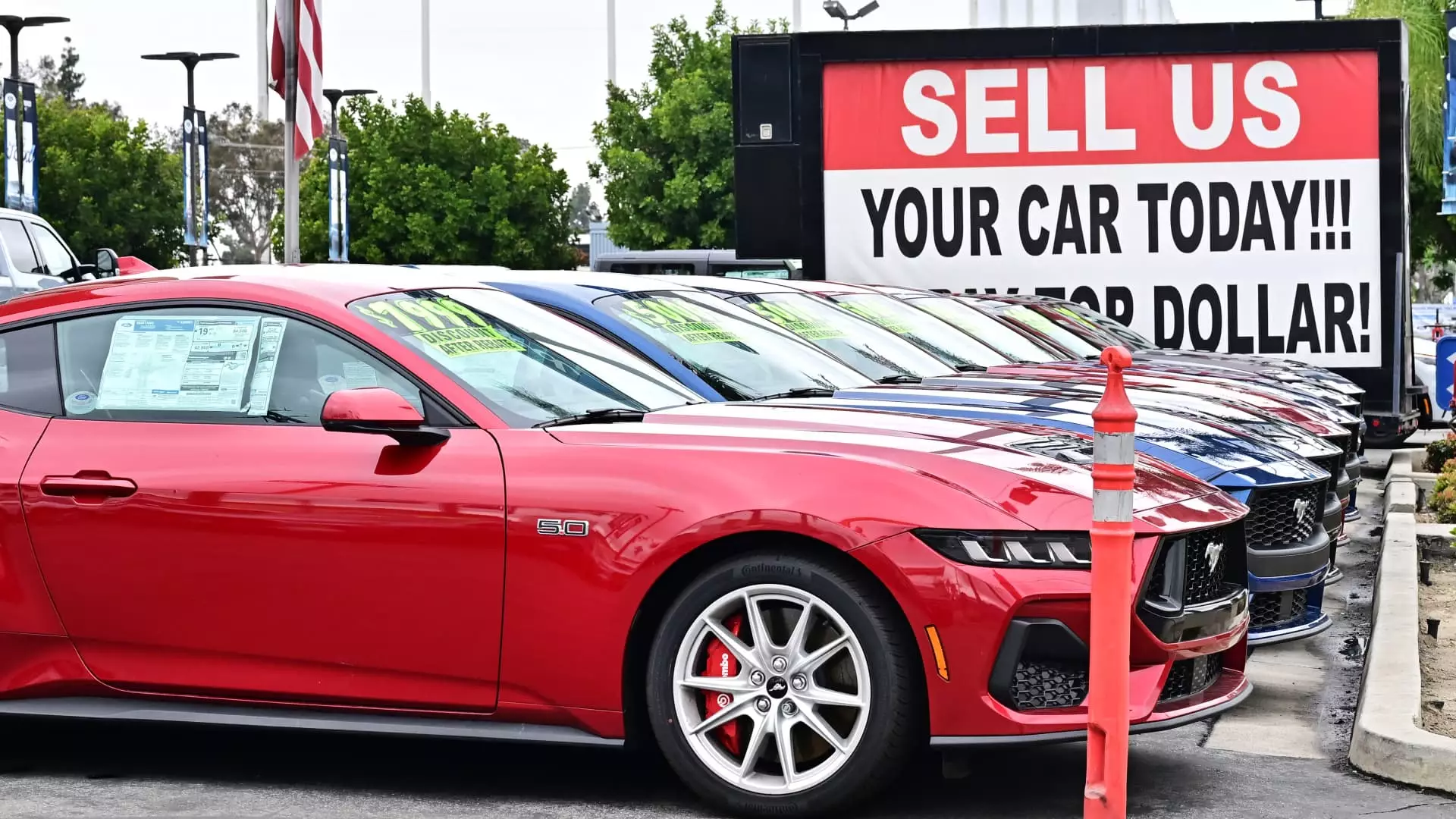In the bustling automotive landscape of Detroit, a notable trend has emerged: used vehicle prices are experiencing a downward drift. Following April’s record-setting prices, May marked a shift as prices dipped by 1.5%. This decrease, while indicating some market softening, still places prices solidly above last year’s numbers—by a striking 4%. This situation has left consumers caught in a peculiar conundrum, grappling with both the high demand for used vehicles and the specter of potential future price hikes spurred by tariffs.
Understanding the Impact of Tariffs
The current political climate, punctuated by President Trump’s tariffs on imported vehicles and parts, plays a crucial role in influencing the used car market. While these tariffs don’t directly alter used vehicle transactions, their ripple effects on the new car market create a more complex relationship. As new vehicle prices rise, consumers are frequently forced to pivot toward the used market, thus sustaining demand. However, it begs a larger question: should we be concerned about the volatility imposed by such tariffs, or do they drive innovation and adaptation within the industry?
The tariffs inevitably cultivate a landscape where consumer confidence can waver precariously. The fact that individuals are rushing to purchase used cars, fearing imminent price increases, highlights a troubling paradox—how economic decisions, driven by policy uncertainty, can lead to artificial spikes in demand.
Inventory Challenges and Consumer Behavior
As the dynamics unfold, it’s essential to recognize the underlying issues of inventory. The currently limited stockpile of used vehicles—approximately 2.2 million—reflects a significant shift in consumer behavior. People are holding onto their vehicles longer, a trend exacerbated by the challenges posed by the coronavirus pandemic and ongoing supply chain disruptions. This creates a dual-edged sword: while there is less supply, it simultaneously sparks heightened interest among buyers eager to make a purchase before prices rise again.
However, the question remains—what happens when consumers exhaust their options? In the long run, will this demand create a more stable market or simply lead to yet another boom-and-bust cycle? The reality is that as more consumers show interest in pre-owned vehicles, the risk of price inflation grows.
The Future Landscape of the Used Car Market
Reflecting on recent trends and expert assessments, it remains evident that while the immediate outlook for used vehicle prices might appear steady, the market is anything but predictable. Experts from Cox Automotive insist that recent stability in pricing is a positive sign after years of rampant fluctuations. However, this perspective appears overly optimistic when juxtaposed with consumer sentiment and external economic pressures.
Ultimately, as we venture into an evolving market landscape, considerations surrounding tariffs, supply chains, and consumer behaviors will mold our automotive futures. As we navigate these uncharted waters, it’s essential to monitor not just the numbers, but the broader implications of our decisions in driving industry resilience. Amidst these pressures, we must ask: are we merely skating by on temporary stability, or can we steer toward a more sustainable automotive reality?


Leave a Reply